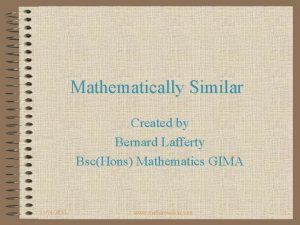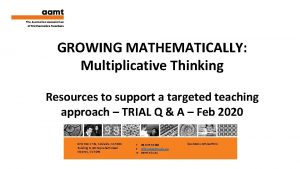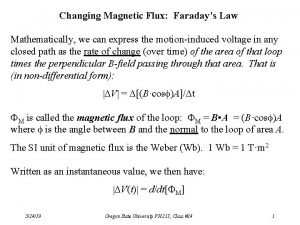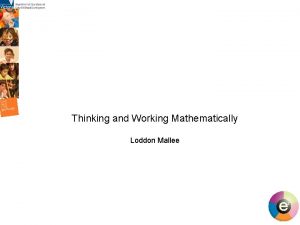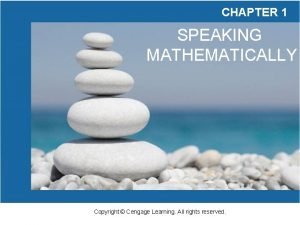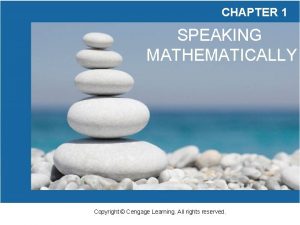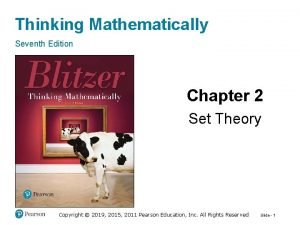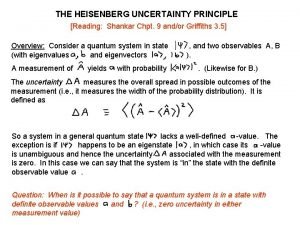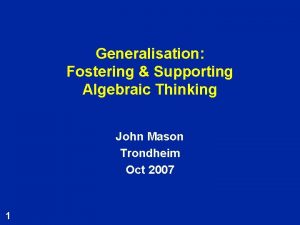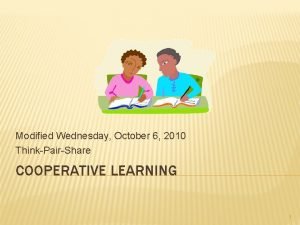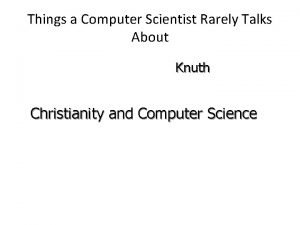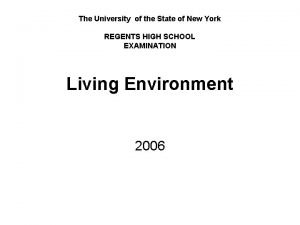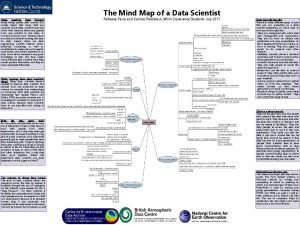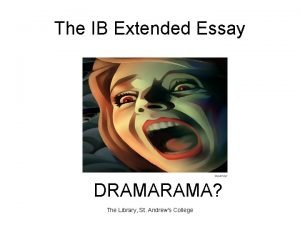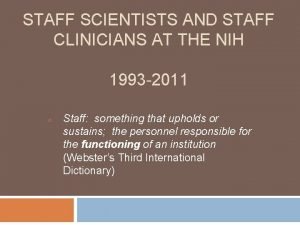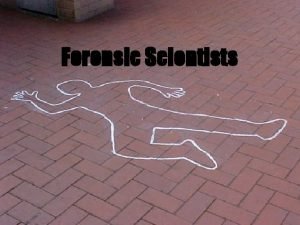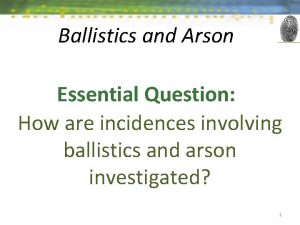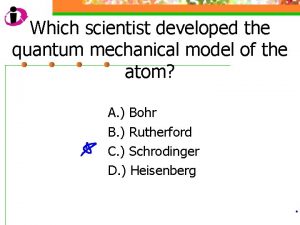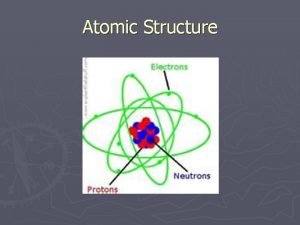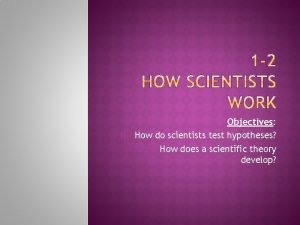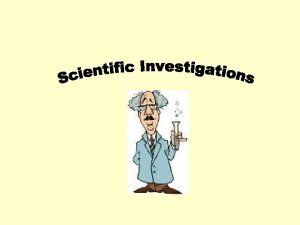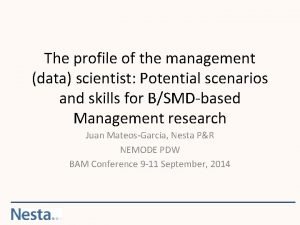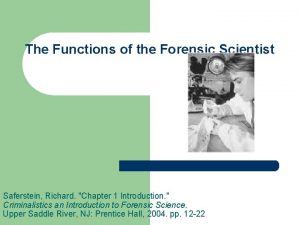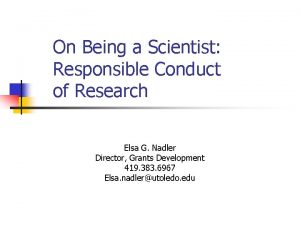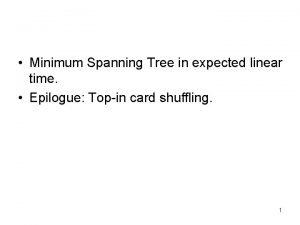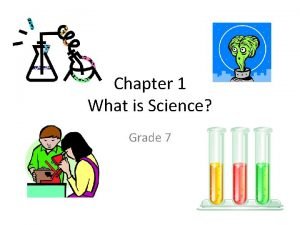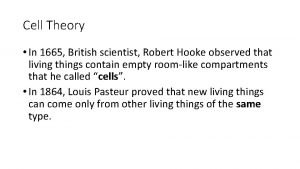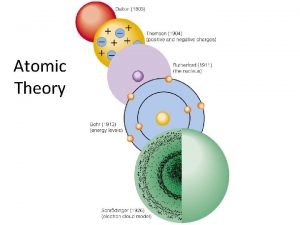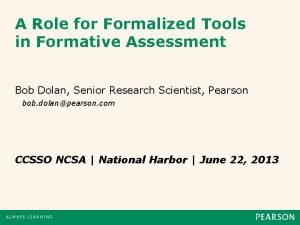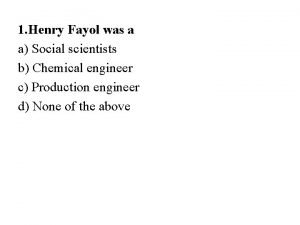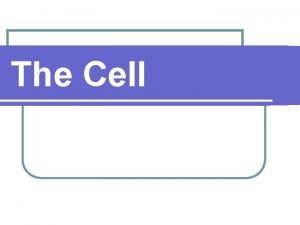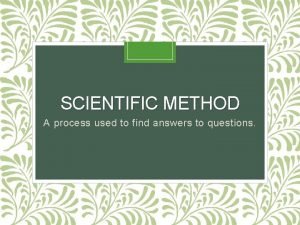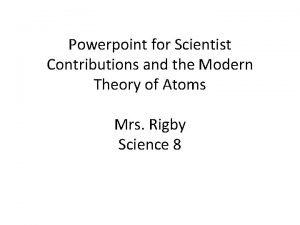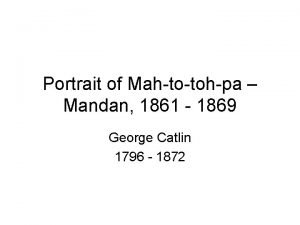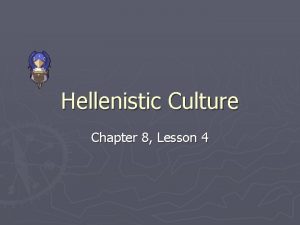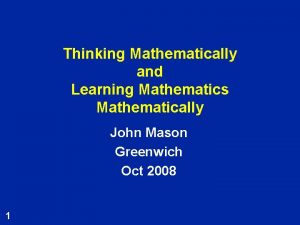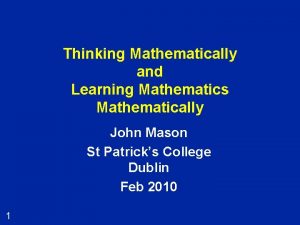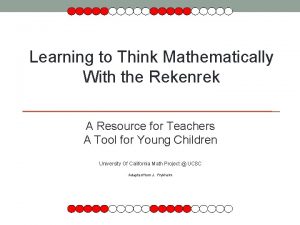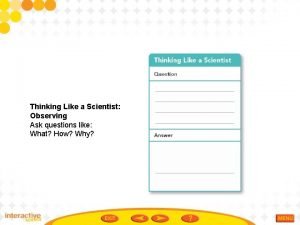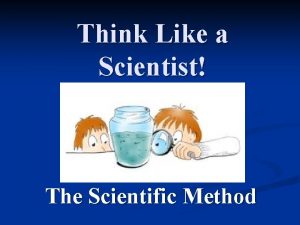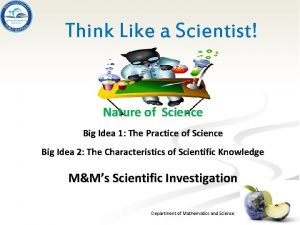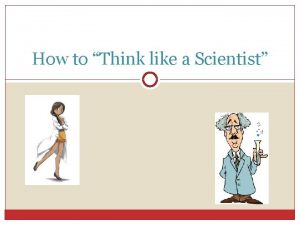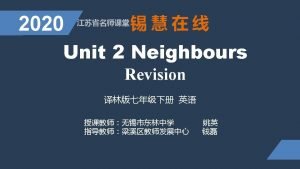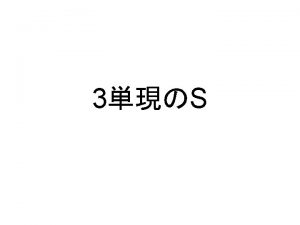Learning to Think Mathematically or like a scientist



















































![41. Well let’s see. Can I construct [√ 3/√ 5]? That’s the question. [√ 41. Well let’s see. Can I construct [√ 3/√ 5]? That’s the question. [√](https://slidetodoc.com/presentation_image_h/c023997bd91930fa7dcddd92050c995a/image-52.jpg)


























- Slides: 78

Learning to Think Mathematically (or like a scientist, or a writer): Mathematical Problem Solving in Theory and in Classrooms Alan H. Schoenfeld University of California Berkeley, CA, USA Alans@Berkeley. Edu

A Brief Overview • What is Problem Solving? • Aspects of Problem Solving, in Mathematics and in Writing (!) • Examples and Evidence • Discussion

What is Problem Solving? A Working Definition: You are engaged in Problem Solving when you are trying to achieve something, and you do not know a straightforward way to do so.

Examples: Finding the product of two 37 -digit numbers is NOT problem solving. (It’s hard and you may goof, but you know how to do it. ) Writing an essay trying to convince someone of your perspective; and Working a mathematics problem where you have to make sense of it and figure out what to do, ARE acts of problem solving.

The Big Picture The following four categories of knowledge determine the quality (and success) of problem solving attempts: (i) the knowledge base (ii) problem solving strategies (heuristics) (iii) “control”: monitoring and selfregulation, or metacognition (iv) beliefs, and the practices that give rise to them.

The Knowledge Base What you know makes a difference. (No surprise there!) But, how we know it is interesting. For example, we have “vocabularies” in lots of different areas…

STOP

The nature of “knowing” is more complex than you might think.

For example, we do not perceive reality directly! If we did, optical illusions would be impossible…

For example, which horizontal line segment is longer?

Here is another picture. What can you tell me about the two curves?

In fact, the curve on the top is a vertical translation of the curve on the bottom!

The point is that we construct “interpretive filters” that shape what we see… And understand! For example, see what you can say about this child’s work:

278 -135 143 352 -146 206 406 -219 107 543 -367 176 510 -238 272 1023 - 835 88

278 -135 143 352 -146 206 406 -219 107 543 -367 176 510 -238 272 1023 - 835 88 What About: 605 -237 ?

Here is another indication we know more about your thought processes than you might think… Memorize the following numbers. Then close your eyes and try to do the multiplication in your head: 687 x 492

I’m waiting… You just can’t do it, can you?

Problem Solving Strategies (Also Known as Heuristics) Examples in Writing: - Organize and outline the paper. - Use Topic Sentences for paragraphs. - Simple writing instructions: Tell them what you’re going to tell them Tell them what you told them

In Mathematics: Here are some of the problem solving strategies described in George Pólya’s book How to Solve It: - draw a diagram - look at cases - solve an easier related problem…

Here are two problems: 1. What is the sum of the first n odd #s? 2. What is the sum of the numbers 1 + 1 +. . . + 1 ? 1 x 2 2 x 3 3 x 4 4 x 5 (n) x (n+1)

1. What is the sum of the first n odd #s? 1=1 1+3=4 1+3+5=9 1 + 3 + 5 + 7 = 16 1 + 3 + 5 + 7 + 9 = 25 So I guess (and then can actually show) � The sum of the first n odd #s is n 2: 1 + 3 + 5 + 7 + … (2 n-1) = n 2

2. What is the sum of the numbers 1 + 1 1 x 2 2 x 3 3 x 4 + 1 +. . . + 1 ? 4 x 5 (n) x (n+1) This time, the sums you get by using values of n = 1, 2, 3, 4, and 5 are: 1/2, 2/3, 3/4, 4/5, 5/6. It’s reasonable to conjecture (and prove!) that the sum will be n/(n+1).

The issue: Pólya’s strategies may sound simple, but they’re not as easy to use as my examples would suggest! For example, consider the strategy “Make sense of the problem by looking at examples. ” How do you know which examples to look at? Here are some problems…

Determine **Try n = 1, 2, 3, 4, 5 and look for a pattern. )**

Let and What can you say about the relationship between the roots of P(x) and the roots of Q(X)? **Select easily factorable polynomials. **

Given and , define Does exist? If so, what is it? **Pick nice values such as 0 and 1. **

Take two squares the same size; put a corner of one on the center of the other. What is the maximum intersection? What is the minimum intersection? **Pick special orientations - e. g. , at 0 or 45 degrees to the horizontal. **

Of all the triangles with perimeter P, which one has the largest area? **A range of empirical values may give you a “feel” for the answer…**

Steps in using a simple strategy like "Exploiting an easier related problem" 1. Think to use the "strategy". 2. Know which version of the strategy to use. 3. Generate appropriate and potentially useful easier related problems. 4. Select the right easier related problem. 5. Solve it. 6. Be able to exploit it…. The Moral: The strategies are tough, and you need detailed training.

The Results Students solved problems I couldn't.

“Control: ” Monitoring and Self. Regulation, or Metacognition What matters isn’t simply what you know - it’s how and when you use what you know!

Examples from writing • Does your paper (or letter, or…) meander, because you’ve lost track of the argument? • Is it incomprehensible because you know the reasons behind what you’re saying but you haven’t told the readers? • Have you lost track of your audience?

A math example: Determine

Half the students used the substitution Half of the remaining students used the technique of partial fractions: And half of the rest used a trig substitution,

They violated a fundamental rule of problem solving: Never do anything difficult until you have made sure you need to!

Here’s another example. Consider this problem: Three points are chosen on the circumference of a circle and the triangle containing them is drawn. What choice of points results in the triangle of largest area? Justify your answer as best as you can.

Here’s what two students did. “I think the largest triangle should probably be equilateral. . . ” “So we have to divide the circle into 3 equal arcs. ” They begin computing the area of their triangle… and keep computing… Twenty minutes later I ask them, “How will knowing the area of the triangle help you? ” They can’t say!


A contrasting example: A mathematician working a complex 2 part problem, and making very effective use of what he knows.

This is the full text of a mathematics faculty member’s attempt to solve a problem. 1. (Reads problem): You are given a fixed triangle T with Base B. Show it is always possible to construct, with ruler and compass, a straight line parallel to B that divides T into two parts of equal area. Can you similarly divide T into five parts of equal area? T B 2. Hmm. I don’t know exactly where to start.

3. Well, I know that the. . . there’s a line in there somewhere. Let me see how I’m going to do it. It’s just a fixed triangle. Got to be some information missing here. T with base B. Got to do a parallel line. Hmmm. T B 4. It said the line divides T into two parts of equal area. Hmmm. Well, I guess I have to get a handle on area measurement here. So what I want to do. . . is construct a line. . . so that I know the relationship of the base. . . of the little triangle to the big one.

5. Now let’s see. Let’s assume I draw a parallel line that looks about right, and it will have base little b. 6. Now, those triangles are similar. b a A B 7. Yeah, all right then, I have an altitude for the big triangle and an altitude for the little triangle so I have little a is to big A as little b is to big B. So what I want to have happen is ½ba = ½AB - ½ba. Isn’t that what I want?

8. Right! In other words I want ab = ½AB. Which is ¼ of A times [mumbles; confused]: 1/√ 2 x A x B … 9. So if I can construct the √ 2, which I can! Then I should be able to draw this line. . . through a point which intersects an altitude dropped from the vertex. That’s little a = A/√ 2 or A = a√ 2 , either way. 10. And I think I can do things like that because if I remember, I take these 45 -degree angle things, and I go 1, 1, √ 2. 11. And if I want to have a√ 2 … then I do that. . . mmm. Wait a minute. . . I can try to figure out how to construct 1/√ 2. 12. OK. So I just gotta remember how to make this construction. So I want to draw this line through this point and I want this animal to be -- (1√ 2 x A). I know what A is, that’s given, so all I gotta do is figure out how to multiply 1/√ 2 times it.

13. Let me think of it. Ah huh! 1/√ 2 … let me see here. . . ummm. That’s ½ plus ½ is 1. 1 1/√ 2 14. So of course if I have a hypotenuse of 1. . . 15. Wait a minute. . . 1/√ 2 x (√ 2/√ 2) = √ 2/2. . . that’s dumb! 16. Yeah, so I construct √ 2 from a 45, 90. OK, so that’s an easier way. Right? 17. I bisect it. That gives me √ 2/2. I multiply it by A. . . now how did I used to do that?

18. Oh heavens! How did we used to multiply times A? That. . . the best way to do that is to construct A. . . then we get √ 2 times A, and then we just bisect that and we get A times √ 2/2. OK. 19. That will be. . . what!. . . mmm. . . that will be the length. Now I drop a perpendicular from here to here. OK, and that will be. . . ta, ta. . . little a. A/√ 2/2 A A

20. So that I will mark off little a as being A√ 2/2. And automatically when I draw a line through that point. . . I’d better get √ 2/2 times big B. OK 21. And when I multiply those guys together I get (2/4)AB. So I get half the area. . . what? . . . yeah. . . times ½ - so I get exactly half the area in the top triangle, so I better have half the area left in the bottom one. OK. A√ 2/2

22. OK, now can I do it with 5 parts? 23. Assuming 4 lines. 24. Now this is going to be interesting because these lines have to be graduated. . . that. . . 25. I think, rather than get a whole lot of triangles here, I think the idea, the essential question is can I slice off. . . 1/5 of the area. . . hmmm. . . 26. Now wait a minute! This is interesting. Let’s get a. . . How about 4 lines instead of. . . 27. I want these to be. . . all equal areas. Right? A 1, A 2, A 3, A 4, A 5, right?

28. Sneak! I can. . . I can do it for a power of 2. That’s easy because I can just do what I did at the beginning and keep slicing it all the time. 29. Now can I use that kind of induction thought? 30. I want that to be 2/5. And I want that to be 3/5. (pointing to relevant regions) 31. So let’s make a little simpler one here. 1/5

32. If you could do that then you can construct √ 5. But I can construct √ 5 to 1. . . square root of 5, right? 33. So I can construct. . . OK. So that certainly isn’t going to do it. No contradiction. . . 34. Now, I do want to see, therefore, what I have here. 35. I’m essentially saying it is possible for me to construct it in such a way that it is 1, 2, 3, 4, 5, 1/5 the area. . . OK. 36. So little a times little b has got to equal 1/5 AB. So I can certainly chop the top piece off the area and have it be 1/5. Right? 1 √ 5 2

37. Now the first part of the problem, I know the ratio of the next base to draw. . . because it is going to be √ 2 times this base. So I can certainly chop off the top 2/5

38. Now from the first part of the problem I know the ratio of the top. . . uh, OK, now this is 2/5 here, so top 4/5. OK. All right. So all I gotta be able to do is chop off the top 3/5 and I’m done. 39. It would seem now that it seems more possible. . . let’s see. . . 3/5 40. We want to make a base here such that little a times little b is equal to. . . the area of this thing is going to be 3/5. . . 3/5 AB. . . in areas, right! And that means little a times little b is [√ 3/√ 5 A] [√ 3/√ 5 B]. OK, then can I construct [√ 3/√ 5]? If so then this can be done in one shot.
![41 Well lets see Can I construct 3 5 Thats the question 41. Well let’s see. Can I construct [√ 3/√ 5]? That’s the question. [√](https://slidetodoc.com/presentation_image_h/c023997bd91930fa7dcddd92050c995a/image-52.jpg)
41. Well let’s see. Can I construct [√ 3/√ 5]? That’s the question. [√ 3/√ 5] x [√ 5/√ 5] = √ 15/5. 42. Wait a minute. Is √ 15 constructible? √ 15 is. . . 43. It is √(16 -1). But I don’t like that. It doesn’t seem the way to go. 44. 162 - 12 equals. . . [expletive] 45. Somehow it rests on that. 46. [Expletive] If I can do √ 15. Can I divide things and get this? 47. Yeah, there is a trick! What you do is lay off five things. One, two, three, four, five. And then you draw these parallel lines by dividing them into fifths. So I can divide things into fifths so that’s not a problem. 1/5

48. So it’s just constructing √ 15 , then I can answer the whole problem. 49. I got to think of a better way to construct √ 15 than what I’m thinking of. . . or I got to think of a way to convince myself that I can’t. . . ummm. . . x 2. . . 15. 50. Trying to remember my algebra to knock this off with a sledgehammer. 51. It’s been so many years since I taught that course. It’s 5 years. I can’t remember it. 52. Wait a minute! 53. I seem to have in my head somewhere a memory about quadratic extension. 54. Try it differently here. mmm… 55. So if I take a line of length 1 and a line of length … And I erect a perpendicular and swing a 16 [he means √ 16] here. Then I’ll get √ 15 here, won’t I? 4 1 √ 15

56. I’ll have to, so that I can construct √ 15 times anything because I’ll just multiply this by A and this gets multiplied by A divided by 5 using that trick. Which means that I should be able to construct this length A√ 3/√ 5 and if I can construct this length then I can mark it off on here [the altitude to from the top vertex to B] and I can draw this line [the parallel to the base] and so I will answer the question as YES!! A√ 3/√ 5


Methods for Inducing Good "Control” 1. Watching videotapes 2. Role-modeling solutions 3. Serving as "control" for class 4. Asking nasty questions during problem solving sessions….

What (exactly) are you doing? (Can you describe it precisely? ) Why are you doing it? (How does it fit into the solution? ) How does it help you? (What will you do with the outcome when you obtain it? )


Beliefs, and the Practices that Give Rise to Them.

Beliefs about writing Writing is easy - you just write down what’s in your head. Writing is like telling a story. You start at the beginning and follow the narrative. (Both of these beliefs cause problems. I spent about 5000 hours writing my problem solving book, and also my new book How We Think. )

U. S. National Assessment of Educational Progress Carpenter, Lindquist, Matthews, & Silver, 1983 An army bus holds 36 soldiers. If 1128 soldiers are being bussed to their training site, how many buses are needed? 29% 18% 23% 30% 31 R 12 31 32 other

Kurt Reusser asks 97 1 st and 2 nd graders: There are 26 sheep and 10 goats on a ship. How old is the captain? 76 students "solve" it, using the numbers. H. Radatz gives non-problems such as: Alan drove the 50 miles from Berkeley to Palo Alto at 8 a. m. On the way he picked up 3 friends. No question is asked. Yet, from K-6, an increasing % of students "solve" the problem by combining the #'s and producing an "answer!

Some Typical Student Beliefs about Mathematics 1. There is one right way to solve any mathematics problem. 2. Mathematics is passed on from above for memorization. 3. Mathematics is a solitary activity. 4. All problems can be solved in 5 minutes or less. 5. Formal proof has nothing to do with discovery or invention. 6. School mathematics has little or nothing to do with the real world.

From an open-ended questionnaire to high school students: How long should it take to work a typical homework problem? 2 -5 minutes 45 seconds 1 -2 minutes 3 minutes 2 -3 minutes 1 minute ≤ 1 minute 1/2 - 2 minutes <5 minutes few 1 -2 minutes

From the same questionnaire: “What is a reasonable amount of time to work on a problem before you know it is impossible? ” 15 -20 minutes 10 minutes 5 minutes 3 -4 minutes 10 minutes 2 or 3 minutes “It should only take a few minutes if you understand it. No more than 10 -15 minutes should be spent on a problem. ”

Dealing with Word Problems John had 7 apples. He gave 5 apples to Mary. How many apples does John have left?

The “key word” procedure: John had 7 apples. He gave 5 apples to Mary. How many apples does John have left? Procedure: (7, 5, “left”) (7 -5).

Now imagine what students do with these problems: John had 7 apples. He left the room to get 5 apples for Mary. How many apples does John have? Mr. Left has 7 apples…

On Beliefs and Practices Students develop a host of beliefs that can either enhance or impede their mathematical effectiveness. They learn those beliefs as the result of the abstraction of typical practices in their mathematics classrooms. Rich classroom practices can result in students' developing more productive beliefs and behaviors.

A Deceptively Simple Example: Mathematics as empirical give-and-take, with students at the edge of their own understanding. . . The Problem: We all know the Pythagorean Theorem: In a right triangle with legs a and b and hypotenuse c, a 2 + b 2 = c 2. What can we say about it? Explore: - multiple proofs - new interpretations - extensions to more than 3 variables - extensions to more than 2 dimensions - abstractions of special cases – for example, the (3, 4, 5) right triangle.

There is a well known solution: All solutions in integers to the Diophantine equation a 2 + b 2 = c 2 are of the form a = M 2 - N 2 b = 2 MN c = M 2 + N 2 where M and N are integers.

Pythagoras, Continued What can we say about whole number solutions to the Pythagorean theorem? 1. Multiples of known solutions – e. g. the (30, 40, 50) triangle – are trivial; we should only look at solutions with no common factors (relatively prime solutions). 2. We can approach this problem empirically, and gather data. What Pythagorean triples do we know? 3, 4, 5 5, 12, 13 7, 24, 25 8, 15, 17 9, 40, 41 12, 35, 37 (!)

The students continued. Under the assumption that a, b, and c have no common factors, • They conjectured and proved that c is always odd • They conjectured and proved that when a is odd, there are infinitely many triples of the form (a, b, b + 1) (a = 2 z +1, b = 2 z 2 + 2 z, c =2 z 2 + 2 z +1) • They conjectured and proved that when a is even, there are infinitely many triples of the form (a, b, b + 2) (a = 4 z, b = 4 z 2 - 1, c =4 z 2 +1) • They conjectured there are no others (oops!). . . and proved there are no pythagorean triples of the form (x, y, y + 3). And then a student asked …

Here is a different kind of story, about students developing mathematical autonomy and authority. I asked my class to work the following problem:


Summary and Conclusions: The following four categories of knowledge determine the quality (and success) of problem solving attempts: (i) the knowledge base (ii) problem solving strategies (heuristics) (iii) “control”: monitoring and self-regulation, or metacognition (iv) beliefs, and the practices that give rise to them.

Students develop their sense of mathematics (or any other subject matter) from their experience with it. It is possible to create a culture of mathematical sense-making in the classroom, where students experience mathematics as a form of sensemaking. In such a context, they can develop the kinds of knowledge and beliefs that will enable them to be effective problem solvers. That is the kind of environment one would hope to see in our mathematics classrooms. In fact…

The issue is not just mathematics. Properly conceived, writing or any other academic discipline is a sensemaking, problem-solving activity. They can all be taught as such – and there is evidence that teaching for problem solving “works. ” We owe this to our students.
 Girl scout volunteer toolkit
Girl scout volunteer toolkit Ramaniklal ambani
Ramaniklal ambani Rewriting universal conditional statement examples
Rewriting universal conditional statement examples Mathematically similar
Mathematically similar Growing mathematically
Growing mathematically Express magnetic flux mathematically
Express magnetic flux mathematically Open ended maths activities peter sullivan pdf
Open ended maths activities peter sullivan pdf Speaking mathematically examples
Speaking mathematically examples Rewriting a universal existential statement example
Rewriting a universal existential statement example Thinking mathematically 7th edition
Thinking mathematically 7th edition Uncertainty principle derivation
Uncertainty principle derivation Thinking mathematically john mason
Thinking mathematically john mason Robin and jay poem
Robin and jay poem Think family ni
Think family ni Cuadro comparativo de e-learning
Cuadro comparativo de e-learning Think like a researcher
Think like a researcher Whats relative location
Whats relative location Why is it important to think and read like a historian?
Why is it important to think and read like a historian? Think pair share cooperative learning
Think pair share cooperative learning Food scientists measure food energy in:
Food scientists measure food energy in: Data science ausbildung wien
Data science ausbildung wien Things a computer scientist rarely talks about
Things a computer scientist rarely talks about Scientists hypothesize that cabbage broccoli
Scientists hypothesize that cabbage broccoli Data science mindmap
Data science mindmap Far side rocket scientist
Far side rocket scientist Nih staff scientist
Nih staff scientist Si derived unit of pressure scientist
Si derived unit of pressure scientist The strange sea monster of strawberry lake
The strange sea monster of strawberry lake Penjual sebagai artis dan scientist
Penjual sebagai artis dan scientist Forensic scientist definition
Forensic scientist definition What makes a scientist
What makes a scientist Chartered scientist
Chartered scientist Fat herbalife ceo
Fat herbalife ceo Burned fire scientist questions arson
Burned fire scientist questions arson Avogadro scientist
Avogadro scientist Certificated natural scientist
Certificated natural scientist Chief scientist scotland
Chief scientist scotland Sam fraiberger
Sam fraiberger Forensic science jobs
Forensic science jobs Famous english scientists
Famous english scientists Which scientist developed the quantum mechanical
Which scientist developed the quantum mechanical Science process skills predicting
Science process skills predicting Paragraph on scientist
Paragraph on scientist Jelena dzakula
Jelena dzakula Chapter 4 cell theory and cell study
Chapter 4 cell theory and cell study Lloyd albert quarterman biography
Lloyd albert quarterman biography What scientist discovered the electron
What scientist discovered the electron Why are controlled experiments sometimes impossible
Why are controlled experiments sometimes impossible What makes plants grow
What makes plants grow Data scientist
Data scientist Functions of a forensic scientist
Functions of a forensic scientist On being a scientist responsible conduct in research
On being a scientist responsible conduct in research Czech scientist
Czech scientist Robert hooke cellula
Robert hooke cellula Scientist project
Scientist project Scientist tools
Scientist tools Czech scientist
Czech scientist Which scientist
Which scientist Which scientist
Which scientist A scientist's open-mindedness should always be balanced by
A scientist's open-mindedness should always be balanced by 1665 robert hooke cell theory
1665 robert hooke cell theory Scientist cell theory
Scientist cell theory Carol rogers forensic scientist
Carol rogers forensic scientist Which scientist discovered neutron
Which scientist discovered neutron Christ the scientist
Christ the scientist A scientist peeps into a mosquito's stomach
A scientist peeps into a mosquito's stomach Scientist tools
Scientist tools Find out the odd one out
Find out the odd one out A scientist planted seeds in 4 sections
A scientist planted seeds in 4 sections Which sequence represents structures organized
Which sequence represents structures organized Who is the english scientist that discovered cell in 1665
Who is the english scientist that discovered cell in 1665 Guess the scientist
Guess the scientist Ethan is observing chemical and physical properties
Ethan is observing chemical and physical properties Electron cloud model
Electron cloud model George catlin (political scientist)
George catlin (political scientist) Dr. mark dean
Dr. mark dean Mcq on mycobacterium leprae
Mcq on mycobacterium leprae Aerospace engineer salary spacex
Aerospace engineer salary spacex Lesson 4 hellenistic culture
Lesson 4 hellenistic culture



